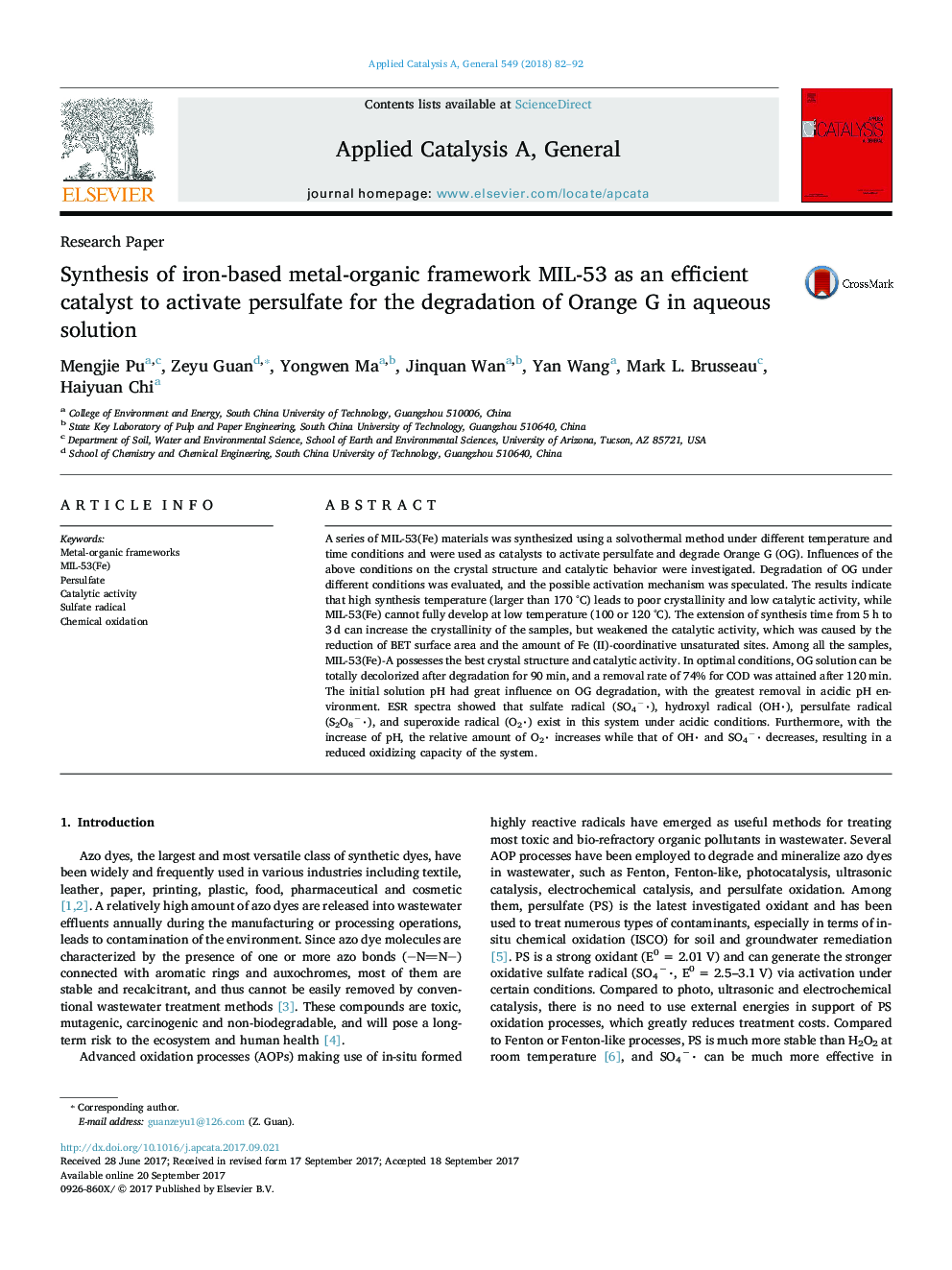| کد مقاله | کد نشریه | سال انتشار | مقاله انگلیسی | نسخه تمام متن |
|---|---|---|---|---|
| 6453196 | 1418497 | 2018 | 11 صفحه PDF | دانلود رایگان |

- MIL-53(Fe) is a new efficient catalyst for persulfate.
- BET and iron CUS of MIL-53(Fe) codetermines the catalytic capacity of MIL-53(Fe).
- Increase FeII/FeIII amount ratio could enhance the catalytic capacity of MIL-53(Fe).
- SO4â, OH, S2O8â, and O2 coexists in this system under acidic conditions.
- pH could change the relative amount of free radicals and oxidizing capacity.
A series of MIL-53(Fe) materials was synthesized using a solvothermal method under different temperature and time conditions and were used as catalysts to activate persulfate and degrade Orange G (OG). Influences of the above conditions on the crystal structure and catalytic behavior were investigated. Degradation of OG under different conditions was evaluated, and the possible activation mechanism was speculated. The results indicate that high synthesis temperature (larger than 170 °C) leads to poor crystallinity and low catalytic activity, while MIL-53(Fe) cannot fully develop at low temperature (100 or 120 °C). The extension of synthesis time from 5 h to 3 d can increase the crystallinity of the samples, but weakened the catalytic activity, which was caused by the reduction of BET surface area and the amount of Fe (II)-coordinative unsaturated sites. Among all the samples, MIL-53(Fe)-A possesses the best crystal structure and catalytic activity. In optimal conditions, OG solution can be totally decolorized after degradation for 90 min, and a removal rate of 74% for COD was attained after 120 min. The initial solution pH had great influence on OG degradation, with the greatest removal in acidic pH environment. ESR spectra showed that sulfate radical (SO4â), hydroxyl radical (OH), persulfate radical (S2O8â), and superoxide radical (O2) exist in this system under acidic conditions. Furthermore, with the increase of pH, the relative amount of O2 increases while that of OH and SO4â decreases, resulting in a reduced oxidizing capacity of the system.
162
Journal: Applied Catalysis A: General - Volume 549, 5 January 2018, Pages 82-92